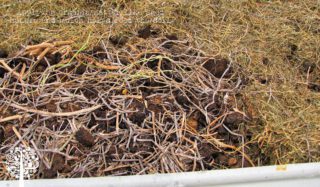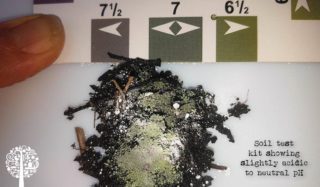All plants need 17 naturally occurring elements to grow, flower, fruit and reproduce successfully. However, they require different quantities depending on the stage of growth.
Macronutrients are elements plants need in large quantities. Non-mineral macronutrients are carbon, hydrogen, and oxygen. They make up around 96% of a plant’s mass and are obtained as carbon dioxide and water. The other essential elements are nitrogen, phosphorus, potassium, calcium, magnesium, and sulfur.
Micronutrients are only needed in trace amounts but are all essential for healthy plant growth and reproduction. These are boron, zinc, manganese, chlorine, copper, iron, molybdenum, and nickel.
Plants access these nutrients in ionic form in the soil water via tiny root hairs that absorb soluble nutrients from the soil. Ninety percent of plants have a relationship with mycorrhizal fungi in the soil around their roots. Nitrogen-fixing bacteria and mycorrhizal fungi help deliver nutrients to plant roots for uptake. It’s a symbiotic relationship, so an active soil food web is essential for plants to access nutrients.
A moist, well-drained soil high in organic matter provides a healthy environment for microbes. They decompose nutrients in compost, decaying leaves, grass clippings, garden prunings, mulch, and worm castings and make them available to plants when needed. As the organic matter breaks down over time, it converts into humus (‘black gold’ – the end product of composting).
Few organic gardeners have perfect soil. Improving our soil with natural amendments rather than synthetic chemical additives has a significant advantage. Natural fertilizers feed the soil microbiology that, in turn, improve soil structure. Chemical fertilizers, however, can lock up nutrients, harm soil biota, change the pH and often result in nutrient deficiencies in plants. There are safe ways to feed our plants without collateral damage!
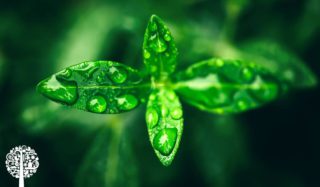
How do Plants get the Nutrients they Need?
Soil is made up of crushed rock particles that contain many of the minerals and elements plants need. However, soil structure, pH, weather conditions, temperature, microorganisms, and soil oxygen and moisture availability all play roles in how plants access that ‘food bank’. You can improve all soils by supplementing the soil’ pantry’ with nutrients your plants can take up when they need them.
Just like we go to the fridge when we’re hungry, as plants grow, they have nutritional demands. Plants’ drink’ these elements via their roots in a soluble form diluted in soil water and through stomata or leaf pores when applied as a foliar spray. Leaf pores also let in carbon dioxide and release water vapor and oxygen through transpiration.
The soil becomes depleted in certain nutrients over time as plants take them to grow. A bit like ‘withdrawing’ from a ‘soil bank account’. We effectively make a ‘deposit’ to top up that nutrient ‘account’ by
fertilizing or replenishing the soil storehouse.
Natural ecosystems constantly recycle nutrients to build soil. For example, trees, plants, animals, and insects fall to the forest floor when they die and are gradually composted by fungi and bacteria in a rich web of life. The decomposed soil (humus) is rich in soluble nutrients, moisture and microorganisms.
We can imitate the principles of this self-mulching, composting system in our gardens. The cheapest sustainable method is simply layering organic plant matter like dried or fresh green grass clippings, chopped prunings or kitchen scraps over the soil and covering it with mulch. There are many other options, though.
Applying Dry Fertilizers
Natural fertilizers come from crushed rocks, plants, and animal by-products and are applied in either dry or liquid forms. Dry fertilizers include:
- soft rock phosphate (rock minerals);
- blood and bone;
- seaweed and alfalfa meal;
- aged manures;
- pelletized, granular or powdered slow-release soil conditioners;
- compost and vermicast.
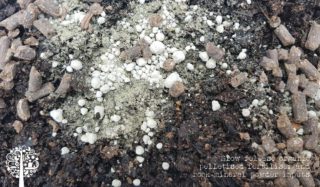
We spread these over the soil surface or mix them into the soil, add to potting mixes or around the root zone when planting. Immobile nutrients like phosphorus and potassium are best applied deeper in the ground or pot before planting, so they will be available where roots can take them up. I also side-dress dry fertilizers around plants under the mulch to top up nutrients during the growing season.
Slow-release soil conditioners are often soluble and usually in a pelletized form that wet easily and soften with watering or rain. Most are based on chicken manure because it is so rich in many nutrients. This form of fertilizer becomes bioavailable quickly as it dissolves. Apply this type of plant food seasonally under the mulch and water well.
Mulches (e.g. dried hay, sugarcane, pea straw, Lucerne and native wood chip) cover the soil to lock in moisture. Mulches provide shelter for microbes while adding nutrients for the plants that, over time, turn into soil. Nutrients in these forms tend to decompose slowly and are broken down by microorganisms.
Wet Soil Amendments
Liquid fertilizers such as kelp or seaweed extract and fish emulsion contain micronutrients in a concentrated form. Diluted kelp tends to last one to three weeks, whereas fish emulsion provides value for one to four months. Liquid or powdered seaweed contains around 60 vital trace elements that build plant immunity to disease and plant health. Liquid seaweed is also a handy pick-me-up ‘Rescue Remedy’ or ‘tonic’ for plants.
Diluted compost, manure and vermicast ‘teas’ and microbial solutions release nutrients quickly. Apply these to the soil and spray over leaves as a foliar feed. We need to apply liquid nutrients in both forms because plants need a higher intake of macronutrients than they can absorb just through their leaves. Foliar feeding only goes so far as some nutrients are immobile once inside the plant. Regular application is needed. I often use foliar feeding as a quick fix, particularly for nutrient deficiencies in mobile elements like iron and zinc.
For larger gardens, you may want to use a fertigation tank or dedicated water tank for adding soluble nutrients. Liquid fertilizers are reticulated via an irrigation system directly to your plants.
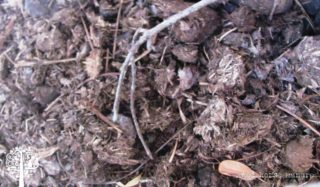
How to Apply to Soil and Plant Leaves
Powdered or pelletized fertilizers should be applied to wet soil – ideally after rain or if your soil is well watered. Water in well before covering with mulch, or if preparing a garden bed to start planting, apply and work into the soil.
An advantage of using a water-soluble fertilizer is that we can apply it directly to the plants in the soil. This gives an instant effect, and it’s possible to see results within a week.
I apply liquid fertilizers as a foliar spray over the leaves directly for a quick fix. I generally spray early in the morning by wetting both upper and lower leaf surfaces. The nutrients enter through the leaf cuticle, mainly in the area around the stomata. You can also spray in the late afternoon or early evening unless the plants are easily attacked by fungal diseases (like the Curcubit family). Avoid creating a humid environment for mildew to thrive!
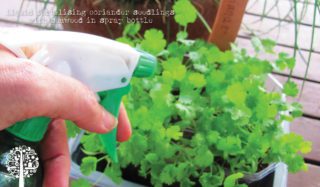
How To Ensure Soil Has The Full Spectrum Of Nutrients
The only way to know what mineral elements are present is to get a professional soil test done. Every soil is unique, and this will give you data to work with, so you know what’s missing and how much of each element you have present. It’s a delicate balancing act! Too little of some elements can cause mineral deficiencies. Too much of others can create an imbalance, causing some nutrients to become unavailable to your plants. Soil tests take the guesswork out of it! You can then get a customized blend of minerals to suit your specific soil. This is a bit of an investment, so there’s another option if this isn’t within your budget.
Apply a balanced powdered or granular rock mineral blend with all the nutrients plants need. Water well because it takes time before microbes convert them into a soluble form. This fertilizing is a storehouse or ‘insurance’ against potential nutrient deficiencies. At least you will know the minerals are all in the soil. The finer the blend, the quicker it will be absorbed into your soil, worm farm, compost or potting mix. I add rock minerals when starting a garden or at least annually.
Building Soil with Humus
The best way to feed any garden is to make your own compost and, ideally, have a worm farm to recycle your kitchen waste. Worms aerate your soil, tunneling and recycling organic matter to provide a rich plant food (humus). They produce worm ‘castings’ or manure as a free plant food you can apply to your soil, as well as a liquid fertilizer.
Working with nature to feed our plants is the most economical, sustainable way to grow a healthy garden.
